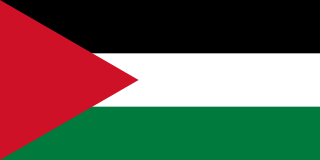 W
WIn 1958, in response to the merger of Egypt and Syria in the United Arab Republic, the two Hashemite kingdoms of Iraq and Jordan established the Arab Federation, a confederation of the two states. According to the 7th article of the Federation convention, the Arab revolt flag was to be the official flag of the Union. The union lasted less than six months, being terminated by the Iraqi Revolution of 1958 in July.
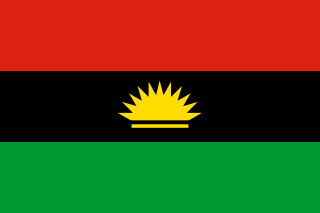 W
WThe flag of the former Republic of Biafra consists of a horizontal tricolour of red, black, and green, charged with a golden rising sun over a golden bar.
 W
WThe flags of the Confederate States of America have a history of three successive designs from 1861 to 1865. The flags were known as the "Stars and Bars", used from 1861 to 1863, the "Stainless Banner", used from 1863 to 1865, and the "Blood-Stained Banner", used in 1865 shortly before the Confederacy's dissolution. A rejected national flag design was also used as a battle flag by the Confederate Army and featured in the "Stainless Banner" and "Blood-Stained Banner" designs. Although this design was never a national flag, it is the most commonly recognized symbol of the Confederacy.
 W
WThe flag of the Couto Misto, as described by the second to last head of state Delfim Modesto Brandão in his memoirs, is formed by two vertical bands, one of white and one of blue.
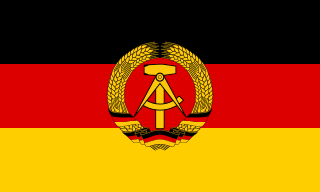 W
WThe flag of East Germany was the official national flag of the German Democratic Republic during its existence from 1949 to 1990. The flag's design and symbolism are derived from the flag of the Weimar Republic and communist symbolism. The flag was outlawed as an unconstitutional and criminal symbol in West Germany and West Berlin, where it was referred to as the Spalterflagge until the late 1960s.
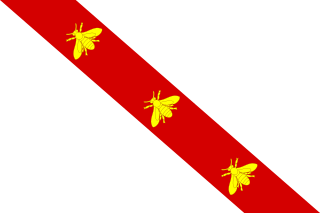 W
WThe flag of Elba was used during the period of stay of Napoleon Bonaparte as sovereign of the island of Elba, from 4 May 1814 to 26 February 1815. The flag, donated by Napoleon on his arrival on the island, was hoisted on the highest point of Portoferraio on the day of the landing of the emperor on the island. The original flag is kept in the Napoleon residence, Palazzina dei Mulini in Portoferraio. The meaning of the insignia chosen by the Emperor has long been, and continues to be, a matter of debate among historians.
 W
WThe Flag of the Federation of Rhodesia and Nyasaland was a modified British Blue Ensign. Centred in the fly of the flag was a depiction of the shield from the Federation's Coat of Arms. The rising sun is taken from the Colonial Arms of Nyasaland, the lion passant is taken from the Arms of Southern Rhodesia, and the black and white wavy lines is taken from the Arms of Northern Rhodesia. In this form, it shows the Federation of all three British Colonies which lasted from 1953 to 31 December 1963. This flag flew alongside the Union Jack for the duration of the existence of the Federation.
 W
WThe flag of East Turkestan, also known as the Kökbayraq, was the national flag of the First East Turkestan Republic (1933–1934). The East Turkestan Flag has a white crescent with a five pointed star on blue background, it was adopted on 12 November 1933 as the national flag of East Turkestan during Declaration of the Turkish Islamic Republic of East Turkestan. With the exception of the blue background, the flag is identical to the Flag of Turkey.
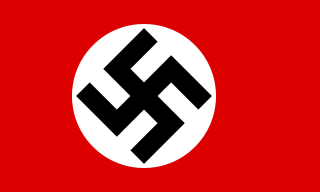 W
WThe flag of Nazi Germany, officially the flag of the German Reich, featured a red background with a swastika on a white disc. This flag came into use initially as the banner of the Nazi Party (NSDAP) after its foundation. Following the appointment of Adolf Hitler as Chancellor in 1933, this flag was adopted as one of the nation's dual national flags, the other being the black-white-red horizontal tricolour of the German Empire.
 W
WThe flag of Southern Rhodesia was a blue ensign, later changed to a sky-blue ensign, with the coat of arms of Southern Rhodesia on it. The flag was in use in Southern Rhodesia from 1923 to 1953 and from 1964 to 1965. It was also used by the unrecognised Rhodesia from 1965 to 1968. The flag was initially used unofficially internally before being approved for use outside of the colony by the Colonial Office in 1937. The colour was changed to sky blue in 1964 to protest the treatment of Southern Rhodesia after its inclusion in the failed Federation of Rhodesia and Nyasaland.
 W
WThe flag of the Qing dynasty was an emblem adopted in the late 19th century featuring the Azure Dragon on a plain yellow field with the red flaming pearl in the upper left corner. It became the first national flag of China and is usually referred to as the "Yellow Dragon Flag".
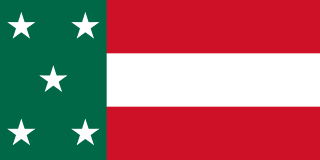 W
WThe Flag of Yucatán was the flag used by the former Republic of Yucatán, when in the middle of 19th century it was proclaimed in the territory of the Yucatán Peninsula. The republic comprised the present Mexican states of Yucatán, Campeche and Quintana Roo.
 W
WThe Mughal Empire had a number of imperial flags and standards. The principal imperial standard of the Mughals was known as the alam. It was primarily moss green. It displayed a lion and sun facing the hoist of the flag. The Mughals traced their use of the alam back to Timur.
 W
WFlag of Galicia and Lodomeria - created after 1772 when this previously Polish province had been annexed to Austria. Until 1849 Kingdom of Galicia and Lodomeria constituted one crownland with Bukovina and used the blue-red flag consisting of two horizontal stripes of equal width. Following the separation of Bukovina and Galicia in 1849, the old blue-red flag was adopted by Bukovina while Galicia received a new flag consisting of three horizontal stripes of equal width: blue, red and yellow. This flag had remained in use until 1890 when Galicia and Lodomeria received a new flag consisting of two horizontal stripes: red and white. The colours of the new Galician flag, which remained in use until the dissolution of this kingdom in 1918, had resembled the white and red Polish flag adopted in 1831 by the Polish Parliament.
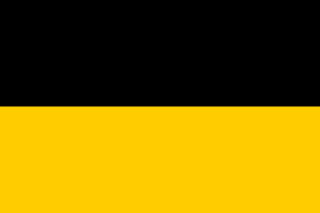 W
WSince the days of Rudolph of Habsburg and the 1283 Treaty of Rheinfelden, the combination of red-white-red was widely considered to be the Austrian colours used by the ruling Habsburg dynasty. Black and yellow later became the colours used by the Imperial House of Habsburg when they held the title of Holy Roman Emperor, as they did from the mid-15th century all the way to the dissolution of the Holy Roman Empire in 1806, and were themselves derived from the banner of the Empire. The original form of this flag featured a yellow background with a black double-headed eagle. However, this proved to be a complicated design, and was hard to reproduce. In the 18th century, a simpler form with black and yellow bars started to appear in the lands ruled by the Habsburg Monarchy. With the end of the Holy Roman Empire in 1806, this flag was approved for use as a civil flag. The black-yellow flag was used in a way similar to a modern national flag by the Austrian Habsburg Monarchy within the Holy Roman Empire, by the later Austrian Empire, and by the Austrian part of Austria-Hungary, and was sometimes informally used for the entire empire, up until 1918.
 W
WThe flag of the Croatian Republic of Herzeg-Bosnia (1992–96) consists of three equal size, horizontal stripes in the pan-Slavic colours arranged in Croat tricolour: red, white and blue. In the middle is the coat of arms of the Croatian Republic of Herzeg-Bosnia stylised with a triple wattle at the top. The flag is used today by the West Herzegovina Canton and Canton 10 of the Federation of Bosnia and Herzegovina
 W
WThe flag of the Holy Roman Empire was not a national flag, but rather an imperial banner used by the Holy Roman Emperor; black and gold were used as the colours of the imperial banner, a black eagle on a golden background. After the late 13th or early 14th century, the claws and beak of the eagle were coloured red. From the early 15th century, a double-headed eagle was used.
 W
WThe Flag of the Jaffna Kingdom of the Aryacakravarti line of kings of Jaffna kingdom in northern Sri Lanka consisted of the couchant bull, the silver crescent moon with a golden sun. The single sacred conch shell, which spiral open to the right, and in the centre above the sacred bull, is a white parasol with golden tassels and white pearls. The color of the Royal Flag is saffron. The flag symbols are similar to number of flags found in India especially belonging to the Eastern Ganga dynasty. The Setu coins minted by the Aryacakravarti kings also have a similar symbol.
 W
WThe Kalmar Union was the personal union of the kingdoms of Denmark, Norway and Sweden during the 15th century. The first king of the Kalmar Union was Eric of Pomerania. His seal combined the coats of arms of Norway, Denmark, Sweden and Pomerania, and in addition the Three Crowns symbol in sinister chief; the latter heraldic design predates the Kalmar Union, and is now mostly associated with the coat of arms of Sweden, but which during the 15th century came to represent the three kingdoms of the union.
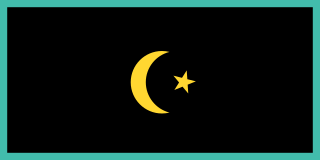 W
WThe Khanate of Khiva was a Central Asian polity that existed in the historical region of Khwarezm in Central Asia from 1511 to 1920, except for a period of Afsharid occupation by Nader Shah between 1740 and 1746. Centred in the irrigated plains of the lower Amu Darya, south of the Aral Sea, with the capital in the city of Khiva, the country was ruled by a Turco-Mongol tribe, the Khongirads, who came from Astrakhan. It covered present western Uzbekistan, southwestern Kazakhstan and much of Turkmenistan before Russian arrival at the second half of the 19th century.
 W
WThe flag of the British Leeward Islands was the flag of the Federal Colony of the Leeward Islands. It was a Blue Ensign with a badge. The colonies under the Federal Colony had their own badges from 1909. The Governor-in-chief of the Leeward Islands used a Union Flag defaced with the coat of arms.
 W
WThe flag of the Maakhir de facto autonomous region of Somalia was originally established with the declaration of the first Maakhir government, though with the emergency in Maakhir in early 2008, President Jibrell Ali Salad called for a new government to better address the needs of Maakhiris. A new flag was then proposed for Maakhir, which is the current flag.
 W
WThe flag of French Sudan was the French tricolour, used by most French colonial possessions, with a black stick figure with arms raised, a so-called kanaga. The flag continued to be used when the colony gained autonomy from France in 1958, but its colors were changed to green, yellow and red with the adoption of the flag of the independent Mali Federation in 1959.
 W
WThe flag of the Empire of Manchuria had a yellow field with four horizontal stripes of different colors in the upper-left corner. The colors of the flag were based on the colors on the Five Races Under One Union flags used by the Beiyang government and the Empire of China. The flag was first established in Announcement of National Flag on March 1, 1932.
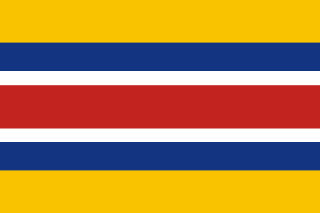 W
WThe flag used by the Mengjiang United Autonomous Government consists of a horizontal colour pattern of yellow, blue, white, red, white, blue and again yellow.
 W
WThe flag and coat of arms of Moldavia, one of the two Danubian Principalities, together with Wallachia, which formed the basis for the Romanian state, were subject to numerous changes throughout their history.
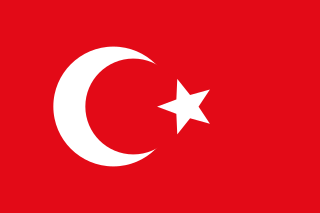 W
WThe Ottoman Empire used a variety of flags, especially as naval ensigns, during its history. The star and crescent came into use in the second half of the 18th century. A buyruldu (decree) from 1793 required that the ships of the Ottoman Navy were to use a red flag with the star and crescent in white. In 1844, a version of this flag, with a five-pointed star, was officially adopted as the Ottoman national flag. The decision to adopt a national flag was part of the Tanzimat reforms which aimed to modernize the Ottoman state in line with the laws and norms of contemporary European states and institutions.
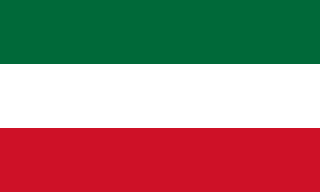 W
WThe Patriote flag was utilised by the Patriote movement in Lower Canada between 1832 and 1838.
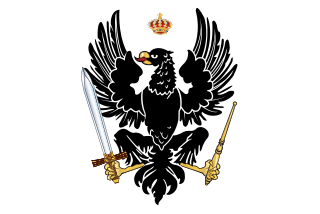 W
WThe state of Prussia had its origins in the separate lands of the Margraviate of Brandenburg and of the Duchy of Prussia. The Margraviate of Brandenburg developed from the medieval Northern March of the Holy Roman Empire, passing to the House of Hohenzollern in 1415. The Duchy of Prussia originated in 1525 when Albert of Brandenburg-Ansbach, a member of a cadet branch of the Hohenzollerns, secularized the eastern lands of the Teutonic Knights as a Polish fief. Prince-elector John Sigismund, Elector of Brandenburg, inherited the Duchy of Prussia in 1617, thus uniting Brandenburg and Prussia under one ruler in a personal union; the Elector's state became known as Brandenburg-Prussia. The Kingdom of Prussia formed when Elector Frederick III assumed the title of Frederick I, King in Prussia, on 18 January 1701.
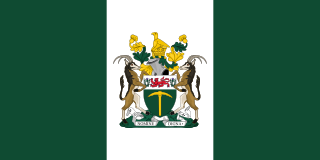 W
WThe flag of Rhodesia changed with political changes in the country. At independence in 1965 the recently adopted flag of Southern Rhodesia was used, until a new flag was adopted in 1968. The 1968 flag remained the flag when the republic was declared in 1970.
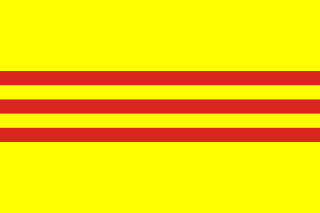 W
WThe flag of South Vietnam served as the national flag of the Provisional Central Government of Vietnam, the State of Vietnam, and its successor, the Republic of Vietnam from 1948 to 1975 until the fall of Saigon. The design consists of a yellow background with three red horizontal stripes through the middle. It is also used to represent the Vietnamese "Heritage and Freedom Flag".
 W
WHistorically, there were various flags of Saint Christopher-Nevis-Anguilla. The "triple palm" flag, the last version, was introduced in 1967.
 W
WThe flag of Serbia and Montenegro was originally adopted on 18 November 1991 as the flag of the Federal Republic of Yugoslavia and was used as such from 1991 to 2006. After the country was renamed to the State Union of Serbia and Montenegro in February 2003 it remained in use as the national flag until the country's dissolution in June 2006.
 W
WThe Flag of South Yemen consisted of a tricolour consisting of the three equal horizontal red, white, and black bands of the Arab Liberation flag with the sky-blue chevron and a red star on the left side of the hoist.
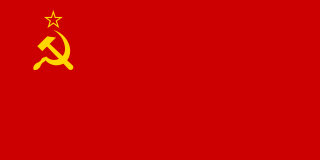 W
WThe State Flag of the Union of Soviet Socialist Republics, commonly known as the Soviet flag, was the official state flag of the Union of Soviet Socialist Republics (USSR) from 1922 to 1991. The flag's design and symbolism are derived from several sources, but emerged during the Russian Revolution. The flag is also an international symbol of the communist movement as a whole.
 W
WThe flag of Tamil Eelam was designated as the national flag of the aspirational state in 1990. The tiger symbol of the Liberation Tigers of Tamil Eelam (LTTE) was created in 1977, differentiating it from the LTTE's emblem by leaving out the letters inscribing the movement's name. In 2005, the LTTE released a guide providing instructions and explaining the correct usage of the Tamil Eelam Flag. The guide written in Tamil specifies the regulations for flying alone or with national flags of other countries, and for general handling of the flag. The flag has four colours: yellow, red, black, and white. It is banned in Sri Lanka and is often seen at protests and functions concerning Tamil Eelam nationalism around the world.
 W
WThe flag and coat of arms of Transylvania were granted by Maria Theresa in 1765, when she established a Grand Principality within the Habsburg Monarchy. While neither symbol has official status in present-day Romania, the coat of arms is marshalled within the national Romanian arms; it was also for decades a component of the Hungarian arms. In its upper half, it prominently includes the eagle, which may have been one of the oldest regional symbols, or is otherwise a localized version of the Polish eagle. Early versions of the Transylvanian charges were first designed in Habsburg Hungary at some point before 1550, and were therefore symbols of pretence.
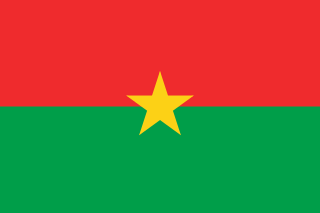 W
WThe national flag of Burkina Faso is formed by two equal horizontal bands of red (top) and green, with a yellow five-pointed star resting in the center. In Blazon: Per fess gules and vert, a mullet of five points Or. The flag was adopted on 4 August 1984. The flag is coloured in the popular Pan-African colours of the Ethiopian flag, reflecting both a break with the country's colonial past and its unity with other African ex-colonies. The red is also said to symbolize the revolution and the green the abundance of agricultural and natural riches. The yellow star placed over the red and green stripes is the guiding light of the revolution. The flag was adopted following the coup of 1983 which brought Thomas Sankara to power.
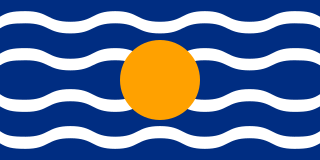 W
WThe flag of the West Indies Federation was used between 1958 and 1962. It bore four equally spaced narrow white stripes with a large orange-gold disc over the middle two lines in the center of the flag, undulating horizontally across a blue field representing the Caribbean Sea and the sun shining upon the waves. The flag was originally designed by Edna Manley. The flag is shown as 1:2; the upper two white stripes reflect the lower ones.
 W
WThe flag of the British Windward Islands was the flag of the Federal Colony of the Windward Islands. It was a Blue Ensign with the badge of the Governor-in-chief in the fly. The separate colonies under the Federal Colony each had their own ensigns. In 1903, the shape of the crown on the badge was changed slightly. The Governor-in-chief of the Windward Islands used a Union Flag defaced with the badge.
 W
WThe flag of Yugoslavia was the official flag of the Yugoslav state from 1918 to 1992. The flag's design and symbolism are derived from the Pan-Slavic movement, which ultimately led to the unification of the South Slavs and the creation of a united south-Slavic state in 1918.